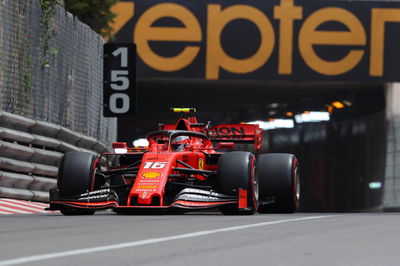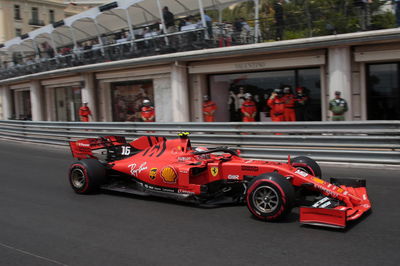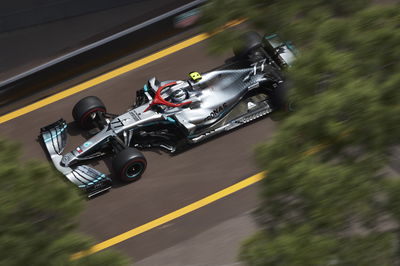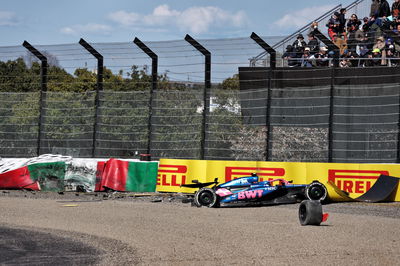Ferrari explains mistakes that led to Leclerc's Q1 exit
Ferrari Formula 1 chief Mattia Binotto has explained the "misjudgement" that led to Charles Leclerc's shock exit in the first stage of qualifying for the Monaco Grand Prix on Saturday.
Ferrari opted to keep Leclerc in the pits late on in Q1 instead of sending him out for a second run on a fresh set of tyres towards the end of the session, believing his lap time of 1m12.149s would be enough to secure a place in Q2.

Ferrari Formula 1 chief Mattia Binotto has explained the "misjudgement" that led to Charles Leclerc's shock exit in the first stage of qualifying for the Monaco Grand Prix on Saturday.
Ferrari opted to keep Leclerc in the pits late on in Q1 instead of sending him out for a second run on a fresh set of tyres towards the end of the session, believing his lap time of 1m12.149s would be enough to secure a place in Q2.
However, a flurry of late improvements bumped Leclerc down to P16, knocking him out of qualifying and leaving the Monegasque driver wanting an explanation as to how it could have happened.
Teammate Sebastian Vettel left it late to get through Q1 after a mistake earlier in the session, and would go on to qualify fourth.
Binotto opted to call a previously-unscheduled press briefing on Saturday evening in Monaco to explain to the media what had happened.
"It is not a good day for us certainly. I think we made a mistake because of the way we make call what happened today, nothing more," Binotto said.
"It has been a misjudgement, a wrong evaluation of what we call the cut-off time. [The] cut-off time is the threshold by when we believed we are comfortable into the next session, and the cut-off time is calculated real-time based on what we see on the track, based on the real-time sectors of all the competitors, on all the drivers.
"When the cut-off time is calculated, we normally add a margin on top of it and the margin is good enough to afford for any tolerances, uncertainty, or whatever might happen during the session normally.
"Certainly what happened today was the margin we applied was not sufficient, for very little, and there are two reasons. "The first is the track improvement had been very significant and important by the end of Q1. The second is that probably our margin did not considering enough variability due to drivers’ maybe confidence by driving through Monaco.
"Certainly in Monaco, that margin needs to be increased in future no doubt. It’s not sufficient to calculate a cut-off time, to apply a margin. But in Monaco, lesson learned of today is that the margin needs to be simply bigger."
Binotto said that Ferrari had wanted to try and save an extra set of tyres, with the need to make up the deficit to Mercedes in the constructors' championship prompting it to take more risks.
|We are facing a situation where we need to catch up points in the championship, we need to catch up compared to our competitors, and when you need to catch up you need to take some risks as well," Binotto said.
"For us certainly today, taking some risks to perform as better as we could in Q2 and Q3, to somehow be challenging our main competitors in Q3 together with Charles and Seb.

"But no doubt, when you look at that, the implication of entering into Q2 is even bigger than trying to challenge them in the final part of qualifying in Q3."
Binotto denied Ferrari had been pre-occupied with ensuring Vettel made it through Q1, explaining that each driver had a separate team of strategists and engineers following their progress, and stressed the team did not need to consider changing the personnel involved.
"I think we’ve got the right people. I think we’ve got the right procedures, but we need to improve our tools," Binotto said.
"And I think we are at least open to new opportunities of looking at what we did and how we may do that differently in the future.
"That is something we will address from the next race onwards, no doubt."











